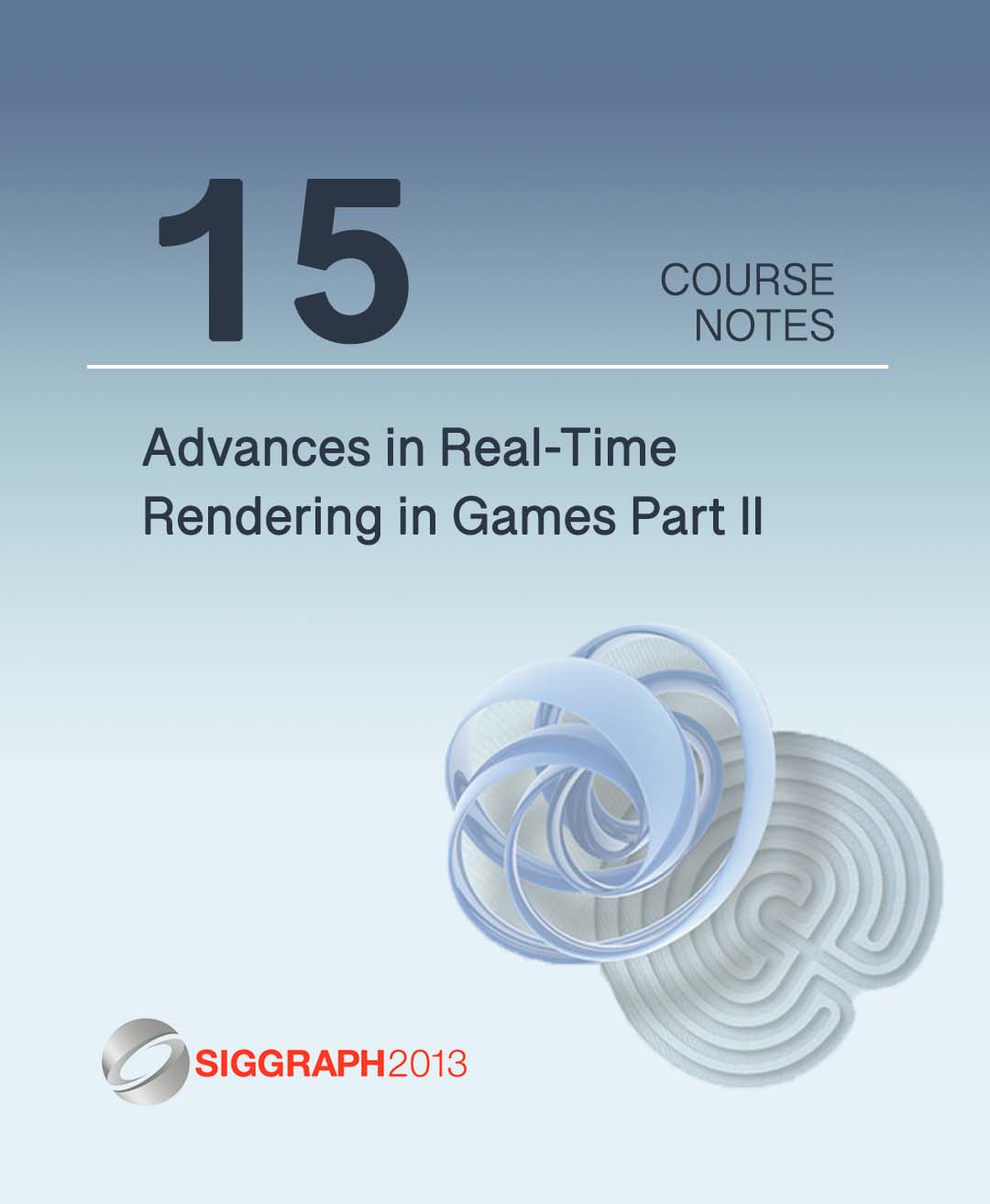“Advances in Real-Time Rendering in Games Part II” by Török, Krzyscin, Bowles, O’Donnell, Stachowiak, et al. …
Conference:
Type(s):
Entry Number: 15
Title:
- Advances in Real-Time Rendering in Games Part II
Course Organizer(s):
Presenter(s)/Author(s):
Abstract:
Prerequisites
Working knowledge of modern real-time graphics APIs like OpenGL or Direct3D and a solid basis in commonly used graphics algorithms. Familiarity with the concepts of programmable shading and shading languages.
Who Should Attend
Technical practitioners and developers of graphics engines for visualization, games, or effects rendering who are interested in interactive rendering.
Description
Advances in real-time graphics research and the ever-increasing power of mainstream GPUs and consoles continue to generate an explosion of innovative algorithms suitable for fast, interactive rendering of complex and engaging virtual worlds. Every year, the latest video games employ a vast variety of sophisticated algorithms to produce ground-breaking 3D rendering that pushes the visual boundaries and interactive experience of rich environments.
The Character Pipeline of the REDengine 3
In The Witcher 2, CD Projekt RED used a DirectX 9-based deferred renderer to support a massive world filled with exciting characters and fearsome monsters. These elements are key to a mature story-driven RPG. The pipeline included many restrictions, some of them caused by the hardware of the target platforms, and some of them simply results of time constraints. Now, after learning from the development process of the previous versions and reviewing feedback from the community, CD Projekt RED is creating the third iteration of its engine and a new character pipeline for rendering and animating humans, animals, and monsters.
This section begins with an overview of the character pipeline used in production of The Witcher 2 and details problems, solutions, shaders, budgets, character lighting especially in cutscenes, and the animations and mimics that make the characters believable. Topics include the rendering and animation differences between the PC and Xbox 360, the challenges of making this complex system run on a much more constrained platform, the new CD Projekt RED system that utilizes DX11 and Forward+ rendering to achieve better results, hair simulation and rendering, skin shading with a completely revised mimics animation system, how the animations moved from the motion capture studio into the game, how animations were created for monsters and animals, and the difficulties of creating a consistent lighting and environment system with so many features created specifically for characters. The section concludes with some ideas for further development of these features.
Oceans on a Shoestring: Shape Representation, Meshing, and Shading
This section covers the current state of the art and introduces new techniques for ocean rendering. It begins by comparing some different shape representations, summarizing a number of simple improvements to existing representations, and describing a new procedural representation that allows efficient height queries. Next, it discusses techniques for meshing and describes a new “pinned grid” meshing technique that significantly reduces aliasing. And it concludes with a discussion of surface shading and the final version of a new ocean shader.
Practical Real-Time Radiosity
This section describes a real-time radiosity solver developed for an upcoming AAA game title: a set of algorithms that permit multi-resolution radiative transfer in static scenes. The basic idea bears resemblance to hierarchical and face cluster radiosity. First the scene is parameterized into a 2D lightmap, then form factors are computed between it and a meshless hierarchical representation of the same scene. At runtime, this information is used to calculate a single bounce of radiosity from arbitrary dynamic light sources. Additional bounces are based on feedback from previous frames, so the solution converges quickly when the emitted light is constant. The proposed algorithms run in real time on current- and next-generation platforms.
Graphics Gems From CryENGINE 3
This section covers rendering topics related to Crytek’s latest engine iteration, the technology that powers titles such as Ryse, Warface, and Crysis 3. Topics include: SMAA 1TX, an update featuring a robust and simple temporal antialising component, and performant and physically plausible camera-related post-processing techniques such as motion blur and depth of field.




